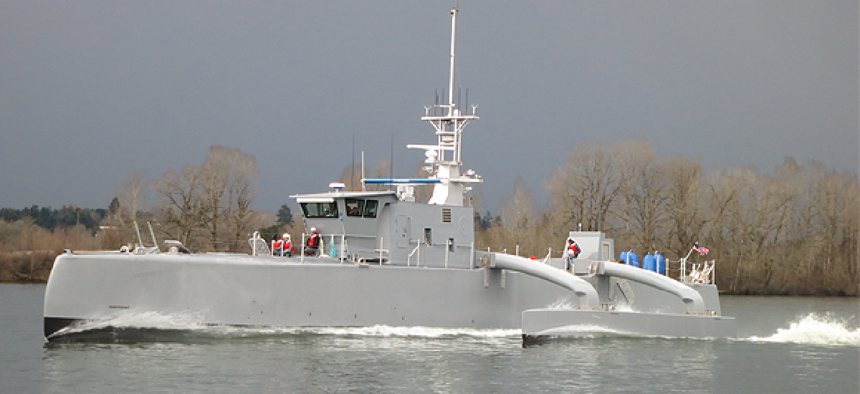A deep dive into solving autonomous navigation challenges

The three-hulled, 132-foot-long Sea Hunter can operate on its own to find enemy submarines or mines, using algorithms to help it see other sea traffic and follow the rules of maritime navigation.
There are some notable challenges that an autonomous system faces in the ocean: waves, wind and the lack of lane markings. In developing Sea Hunter, the Defense Advanced Research Projects Agency worked with Leidos to solve those problems.
Sea Hunter is a three-hulled, 132-foot-long boat that can operate on its own to find enemy submarines or mines. It is monitored via an ISO container on land.
“You can move that 20-foot container anywhere in the world and it wouldn’t know the difference,” Rus Cook, a senior program manager at Leidos, told GCN.
The vessel relies on algorithms to help it see other sea traffic and follow the rules of the ocean, known as International Regulations for Preventing Collisions at Sea. COLREGs are a hurdle that autonomous systems must clear to make it into the maritime environment, Cook said. For example, if two ships are heading toward each other, there are rules for which one gives way and which one maintains its course.
Some of Sea Hunter’s autonomous ability is based on technology that NASA’s Jet Propulsion Laboratory developed for the Mars Exploration Rover mission. Cook said Sea Hunter can tell if another vessel is failing to comply with COLREGs and can change direction to avoid a collision at distances of half a kilometer. He added that other companies that claim to follow COLREGs wait too long to change course, and one said it course-corrected at 10 meters.
“Ten meters is way too close,” Cook said. “Ten meters is a near collision, and you’ve scared someone to death.”
Sea Hunter was developed in 2014 to address the need to track electric submarines and to do so at a fraction of the cost of a guided missile destroyer. There is currently only one Sea Hunter, and it is undergoing COLREGs testing off the coast of San Diego with the help of researchers from Johns Hopkins University’s Applied Physics Lab. Leidos is in negotiations with the Navy to build a second vessel.
A couple of payloads have been tested onboard Sea Hunter, including a mine countermeasure system and a kite that can carry camera equipment and radar.






